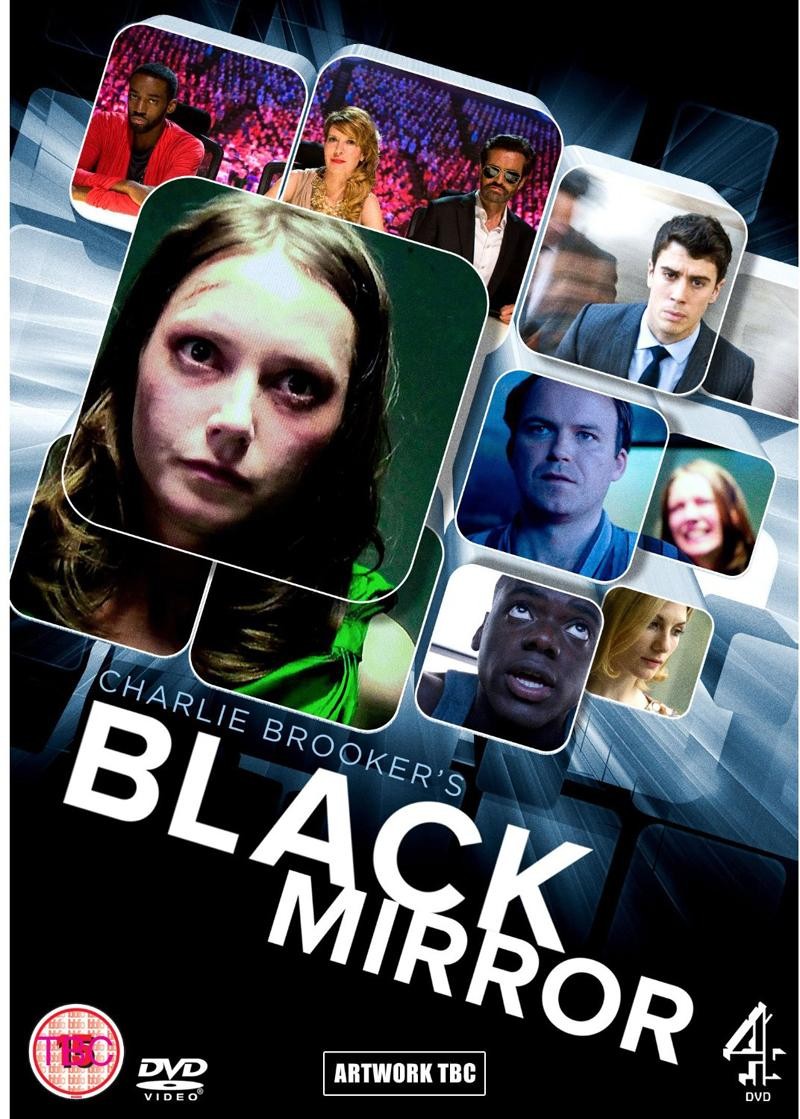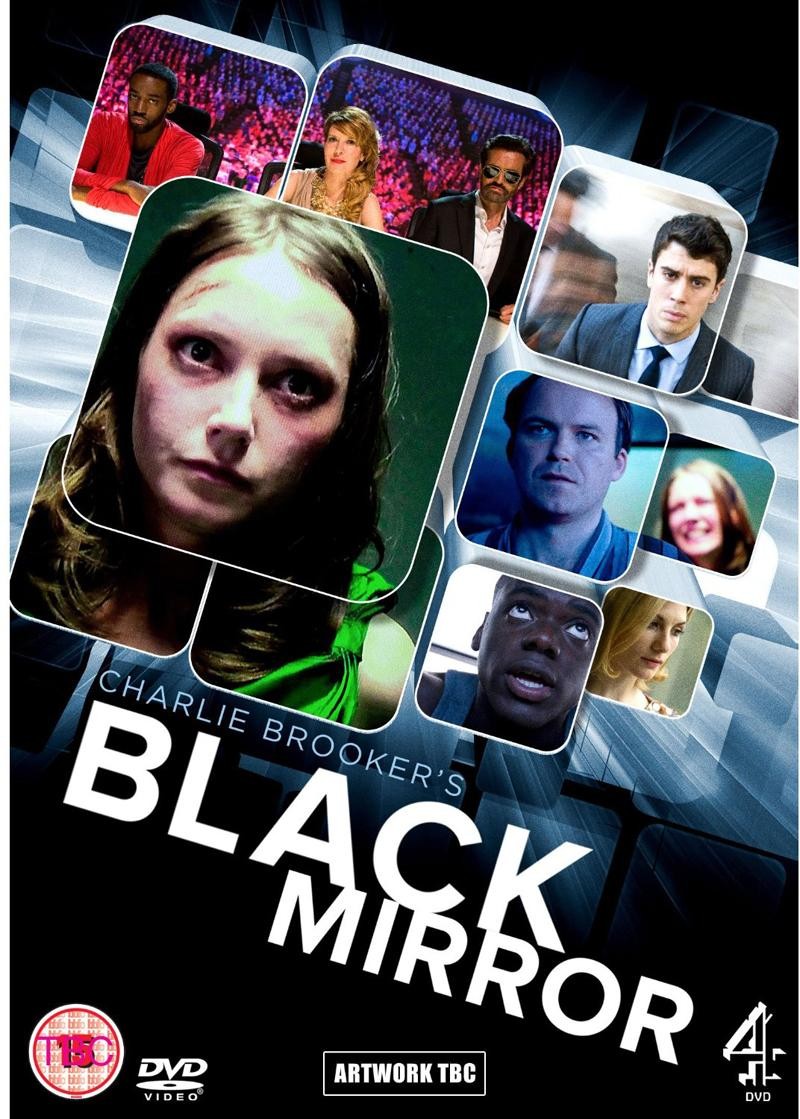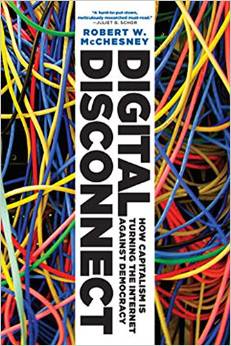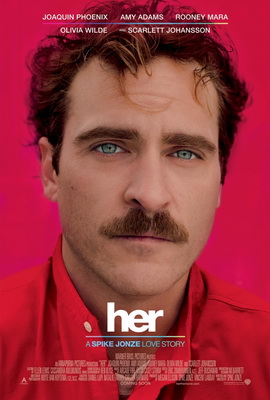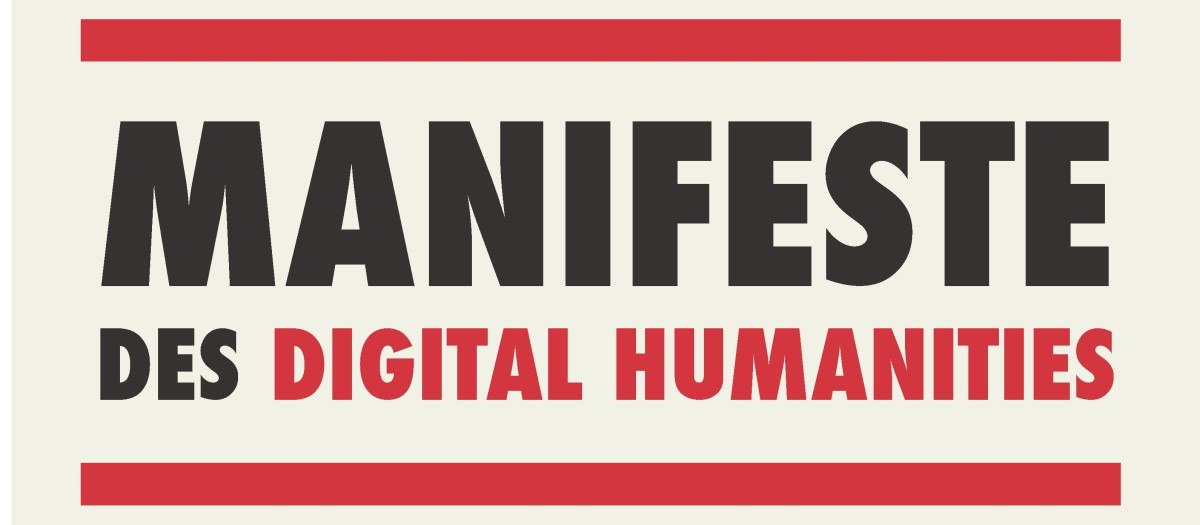a review of Ian Bogost, How to Talk about Videogames (University of Minnesota Press, 2015)
by Bradley J. Fest
~
Over the past two decades or so, the study of videogames has emerged as a rigorous, exciting, and transforming field. During this time there have been a few notable trends in game studies (which is generally the name applied to the study of video and computer games). The first wave, beginning roughly in the mid-1990s, was characterized by wide-ranging debates between scholars and players about what they were actually studying, what aspects of videogames were most fundamental to the medium.[1] Like arguments about whether editing or mise-en-scène was more crucial to the meaning-making of film, the early, sometimes heated conversations in the field were primarily concerned with questions of form. Scholars debated between two perspectives known as narratology and ludology, and asked whether narrative or play was more theoretically important for understanding what makes videogames unique.[2] By the middle of the 2000s, however, this debate appeared to be settled (as perhaps ultimately unproductive and distracting—i.e., obviously both narrative and play are important). Over the past decade, a second wave of scholars has emerged who have moved on to more technical, theoretical concerns, on the one hand, and more social and political issues, on the other (frequently at the same time). Writers such as Patrick Crogan, Nick Dyer-Witherford, Alexander R. Galloway, Patrick Jagoda, Lisa Nakamura, Greig de Peuter, Adrienne Shaw, McKenzie Wark, and many, many others write about how issues such as control and empire, race and class, gender and sexuality, labor and gamification, networks and the national security state, action and procedure can pertain to videogames.[3] Indeed, from a wide sampling of contemporary writing about games, it appears that the old anxieties regarding the seriousness of its object have been put to rest. Of course games are important. They are becoming a dominant cultural medium; they make billions of dollars; they are important political allegories for life in the twenty-first century; they are transforming social space along with labor practices; and, after what many consider a renaissance in independent game development over the past decade, some of them are becoming quite good.
Ian Bogost has been one of the most prominent voices in this second wave of game criticism. A media scholar, game designer, philosopher, historian, and professor of interactive computing at the Georgia Institute of Technology, Bogost has published a number of influential books. His first, Unit Operations: An Approach to Videogame Criticism (2006), places videogames within a broader theoretical framework of comparative media studies, emphasizing that games deserve to be approached on their own terms, not only because they are worthy of attention in and of themselves but also because of what they can show us about the ways other media operate. Bogost argues that “any medium—poetic, literary, cinematic, computational—can be read as a configurative system, an arrangement of discrete, interlocking units of expressive meaning. I call these general instances of procedural expression, unit operations” (2006, 9). His second book, Persuasive Games: The Expressive Power of Videogames (2007), extends his emphasis on the material, discrete processes of games, arguing that they can and do make arguments; that is, games are rhetorical, and they are rhetorical by virtue of what they and their operator can do, their procedures: games make arguments through “procedural rhetoric.”[4] The publication of Persuasive Games in particular—which he promoted with an appearance on The Colbert Report (2005–14)—saw Bogost emerge as a powerful voice in the broad cohort of second wave writers and scholars.
But I feel that the publication of Bogost’s most recent book, How to Talk about Videogames (2015), might very well end up signaling the beginning of a third phase of videogame criticism. If the first task of game criticism was to formally define its object, and the second wave of game studies involved asking what games can and do say about the world, the third phase might see critics reflecting on their own processes and procedures, thinking, not necessarily about what videogames are and do, but about what videogame criticism is and does. How to Talk about Videogames is a book that frequently poses the (now quite old) question: what is the function of criticism at the present time? In an industry dominated by multinational media megaconglomerates, what should the role of (academic) game criticism be? What can a handful of researchers and scholars possibly do or say in the face of such a massive, implacable, profit-driven industry, where every announcement about future games further stokes its rabid fan base of slobbering, ravening hordes to spend hundreds of dollars and thousands of hours consuming a form known for its spectacular violence, ubiquitous misogyny, and myopic tribalism? What is the point of writing about games when the videogame industry appears to happily carry on as if nothing is being said at all, impervious to any conversation that people may be having about its products beyond what “fans” demand?
To read the introduction and conclusion of Bogost’s most recent book, one might think that, suggestions about their viability aside, both the videogame industry and the critical writing surrounding it are in serious crisis, and the matter of the cultural status of the videogame has hardly been put to rest. As a scholar, critic, and designer who has been fairly consistent in positively exploring what digital games can do, what they can uniquely accomplish as a process-based medium, it is striking, at least to this reviewer, that Bogost begins by anxiously admitting,
whenever I write criticism of videogames, someone strongly invested in games as a hobby always asks the question “is this parody?” as if only a miscreant or a comedian or a psychopath would bother to invest the time and deliberateness in even thinking, let alone writing about videogames with the seriousness that random, anonymous Internet users have already used to write about toasters, let alone deliberate intellectuals about film or literature! (Bogost 2015, xi–xii)
Bogost calls this kind of attention to the status of his critical endeavor in a number of places in How to Talk about Videogames. The book shows him involved in that untimely activity of silently but implicitly assessing his body of work, reflectively approaching his critical task with cautious trepidation. In a variety of moments from the opening and closing of the book, games and criticism are put into serious question. Videogames are puerile, an “empty diversion” (182), and without value; “games are grotesque. . . . [they] are gross, revolting, heaps of arbitrary anguish” (1); “games are stupid” (9); “that there could be a game criticism [seems] unlikely and even preposterous” (181). In How to Talk about Videogames, Bogost, at least in some ways, is giving up his previous fight over whether or not videogames are serious aesthetic objects worthy of the same kind of hermeneutic attention given to more established art forms.[5] If games are predominantly treated as “perversion, excess” (183), a symptom of “permanent adolescence” (180), as unserious, wasteful, unproductive, violently sadistic entertainments—perhaps there is a reason. How to Talk about Videogames shows Bogost turning an intellectual corner toward a decidedly ironic sense of his role as a critic and the worthiness of his critical object.
Compare Bogost’s current pessimism with the optimism of his previous volume, How to Do Things with Videogames (2011), to which How to Talk about Videogames functions as a kind of sequel or companion. In this earlier book, he is rather more affirmative about the future of the videogame industry (and, by proxy, videogame criticism):
What if we allowed that videogames have many possible goals and purposes, each of which couples with many possible aesthetics and designs to create many possible player experiences, none of which bears any necessary relationship to the commercial videogame industry as we currently know it. The more games can do, the more the general public will become accepting of, and interested in, the medium in general. (Bogost 2011, 153)
2011’s How to Do Things with Videogames aims to bring to the table things that previous popular and scholarly approaches to videogames had ignored in order to show all the other ways that videogames operate, what they are capable of beyond mere mimetic simulation or entertaining distraction, and how game criticism might allow their audiences to expand beyond the province of the “gamer” to mirror the diversified audiences of other media. Individual chapters are devoted to how videogames produce empathy and inspire reverence; they can be vehicles for electioneering and promotion; games can relax, titillate, and habituate; they can be work. Practicing what he calls “media microecology,” a critical method that “seeks to reveal the impact of a medium’s properties on society . . . through a more specialized, focused attention . . . digging deep into one dark, unexplored corner of a media ecosystem” (2011, 7), Bogost argues that game criticism should be attentive to more than simply narrative or play. The debates that dominated the early days of critical game studies, in this regard, only account for a rather limited view of what games can do. Appearing at a time when many were arguing that the medium was beginning to reach aesthetic maturity, Bogost’s 2011 book sounds a note of hope and promise for the future of game studies and the many unexplored possibilities for game design.
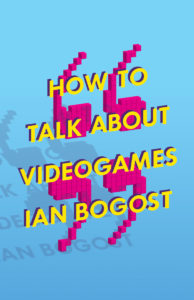
I cannot really overstate, however, the ways in which How to Talk about Videogames, published four years later, shows Bogost reversing tack, questioning his entire enterprise.[6] Even with the appearance of such a serious, well-received game as Gone Home (2013)—to which he devotes a particularly scathing chapter about what the celebration of an ostensibly adolescent game tells us about contemporaneity—this is a book that repeatedly emphasizes the cultural ghetto in which videogames reside. Criticism devoted exclusively to this form risks being “subsistence criticism. . . . God save us from a future of game critics, gnawing on scraps like the zombies that fester in our objects of study” (188). Despite previous claims about videogames “[helping] us expose and interrogate the ways we engage the world in general, not just the ways that computational systems structure or limit that experience” (Bogost 2006, 40), How to Talk about Videogames is, at first glance, a book that raises the question of not only how videogames should be talked about, but whether they have anything to say in the first place.
But it is difficult to gauge the seriousness of Bogost’s skepticism and reluctance given a book filled with twenty short essays of highly readable, informative, and often compelling criticism. (The disappointingly short essay, “The Blue Shell Is Everything That’s Wrong with America”—in which he writes: “This is the Blue Shell of collapse, the Blue Shell of financial hubris, the Blue Shell of the New Gilded Age” [26]—particularly stands out in the way that it reads an important if overlooked aspect of a popular game in terms of larger social issues.) For it is, really, somewhat unthinkable that someone who has written seven books on the subject would arrive at the conclusion that “videogames are a lot like toasters. . . . Like a toaster, a game is both appliance and hearth, both instrument and aesthetic, both gadget and fetish. It’s preposterous to do game criticism, like it’s preposterous to do toaster criticism” (ix and xii).[7] Bogost’s point here is rhetorical, erring on the side of hyperbole in order to emphasize how videogames are primarily process-based—that they work and function like toasters perhaps more than they affect and move like films or novels (a claim with which I imagine many would disagree), and that there is something preposterous in writing criticism about a process-based technology. A decade after emphasizing videogames’ procedurality in Unit Operations, this is a way for him to restate and reemphasize these important claims for the more popular audience intended for How to Talk about Videogames. Games involve actions, which make them different from other media that can be more passively absorbed. This is why videogames are often written about in reviews “full of technical details and thorough testing and final, definitive scores delivered on improbably precise numerical scales” (ix). Bogost is clear. He is not a reviewer. He is not assessing games’ ability to “satisfy our need for leisure [as] their only function.” He is a critic and the critic’s activity, even if his object resembles a toaster, is different.
But though it is apparent why games might require a different kind of criticism than other media, what remains unclear is what Bogost believes the role of the critic ought to be. He says, contradicting the conclusion of How to Do Things with Videogames, that “criticism is not conducted to improve the work or the medium, to win over those who otherwise would turn up their noses at it. . . . Rather, it is conducted to get to the bottom of something, to grasp its form, context, function, meaning, and capacities” (xii). This seems like somewhat of a mistake, and a mistake that ignores both the history of criticism and Bogost’s own practice as a critic. Yes, of course criticism should investigate its object, but even Matthew Arnold, who emphasized “disinterestedness . . . keeping aloof from . . . ‘the practical view of things,’” also understood that such an approach could establish “a current of fresh and true ideas” (Arnold 1993 [1864], 37 and 49). No matter how disinterested, criticism can change the ways that art and the world are conceived and thought about. Indeed, only a sentence later it is difficult to discern what precisely Bogost believes the function of videogame criticism to be if not for improving the work, the medium, the world, if not for establishing a current from which new ideas might emerge. He writes that criticism can “venture so far from ordinariness of a subject that the terrain underfoot gives way from manicured path to wilderness, so far that the words that we would spin tousle the hair of madness. And then, to preserve that wilderness and its madness, such that both the works and our reflections on them become imbricated with one another and carried forward into the future where others might find them anew” (xii; more on this in a moment). It is clear that Bogost understands the mode of the critic to be disinterested and objective, to answer ‘the question ‘What is even going on here?’” (x), but it remains unclear why such an activity would even be necessary or worthwhile, and indeed, there is enough in the book that points to criticism being a futile, unnecessary, parodic, parasitic, preposterous endeavor with no real purpose or outcome. In other words, he may say how to talk about videogames, but not why anyone would ever really want to do so.
I have at least partially convinced myself that Bogost’s claims about videogames being more like toasters than other art forms, along with the statements above regarding the disreputable nature of videogames, are meant as rhetorical provocations, ironic salvos to inspire from others more interesting, rigorous, thoughtful, and complex critical writing, both of the popular and academic stripe. I also understand that, as he did in Unit Operations, Bogost balks at the idea of a critical practice wholly devoted to videogames alone: “the era of fields and disciplines ha[s] ended. The era of critical communities ha[s] ended. And the very idea of game criticism risks Balkanizing games writing from other writing, severing it from the rivers and fields that would sustain it” (187). But even given such an understanding, it is unclear who precisely is suggesting that videogame criticism should be a hermetically sealed niche cut off from the rest of the critical tradition. It is also unclear why videogame criticism is so preposterous, why writing it—even if a critic’s task is limited to getting “to the bottom of something”—is so divorced from the current of other works of cultural criticism. And finally, given what are, at the end of the day, some very good short essays on games that deserve a thoughtful readership, it is unclear why Bogost has framed his activity in such a negatively self-aware fashion.
So, rather than pursue a discussion about the relative merits and faults of Bogost’s critical self-reflexivity, I think it worth asking what changed between his 2011 and 2015 books, what took him from being a cheerleader—albeit a reticent, tempered, and disinterested one—to questioning the very value of videogame criticism itself. Why does he change from thinking about the various possibilities for doing things with videogames to thinking that “entering a games retail outlet is a lot like entering a sex shop or a liquor store . . . game shops are still vaguely unseemly” (182)?[8] I suspect that such events as 2014’s Gamergate—when independent game designer Zoe Quinn, critic Anita Sarkeesian, and others were threatened and harassed for their feminist views—the generally execrable level of discourse found on internet comments pages, and the questionable cultural identity of the “gamer,” probably account for some of Bogost’s malaise.[9] Indeed, most of the essays found in How to Talk about Videogames initially appeared online, largely in The Atlantic (where he is an editor) and Gamasutra, and, I have to imagine, suffered for it in their comments sections. With this change in audience and platform, it seems to follow that the opening and closing of How to Talk about Videogames reflect a general exhaustion with the level of discourse from fans, companies, and internet trolls. How can criticism possibly thrive or have an impact in a community that so frequently demonstrates its intolerance and rage toward other modes of thinking and being that might upset its worldview and sense of cultural identity? How does one talk to those who will not listen?
And if these questions perhaps sound particularly apt today—that the “gamer” might bear an awfully striking resemblance to other headline-grabbing individuals and groups dominating the public discussion in the months after the publication of Bogost’s book, namely Donald J. Trump and his supporters—they should. I agree with Bogost that it can be difficult to see the value of criticism at a time when many United States citizens appear, at least on the surface, to be actively choosing to be uncritical. (As Philip Mirowski argues, the promotion of “ignorance [is] the lynchpin in the neoliberal project” [2013, 96].) Given such a discursive landscape, what is the purpose of writing, even in Bogost’s admirably clear (yet at times maddeningly spare) prose, if no amount of stylistic precision or rhetorical complexity—let alone a mastery of basic facts—can influence one’s audience? How to Talk about Videogames is framed as a response to the anti-intellectual atmosphere of the middle of the second decade of the twenty-first century, and it is an understandably despairing one. As such, it is not surprising that Bogost concludes that criticism has no role to play in improving the medium (or perhaps the world) beyond mere phenomenological encounter and description given the social fabric of life in the 2010s. In a time of vocally racist demagoguery, an era witnessing a rising tide of reactionary nationalism in the US and around the world, a period during which it often seems like no words of any kind can have any rhetorical effect at all—procedurally or otherwise—perhaps the best response is to be quiet. But I also think that this is to misunderstand the function of critical thought, regardless of what its object might be.
To be sure, videogame creators have probably not yet produced a Citizen Kane (1941), and videogame criticism has not yet produced a work like Erich Auerbach’s Mimesis (1946). I am unconvinced, however, that such future accomplishments remain out of reach, that videogames are barred from profound aesthetic expression, and that writing about games preclude the heights attained by previous criticism simply because of some ill-defined aspect of the medium which prevents it from ever aspiring to anything beyond mere craft. Is a study of the Metal Gear series (1987–2015) similar to Roland Barthes’s S/Z (1970) really all that preposterous? Is Mario forever denied his own Samuel Johnson simply because he is composed of code rather than words? For if anything is unclear about Bogost’s book, it is what precisely prohibits videogames from having the effects and impacts of other art forms, why they are restricted to the realm of toasters, incapable of anything beyond adolescent poiesis. Indeed, Bogost’s informative and incisive discussion about Ms. Pac-Man (1981), his thought-provoking interpretation of Mountain (2014), or the many moments of accomplished criticism in his previous books—for example, his masterful discussion of the “figure of fascination” in Unit Operations—betray such claims.[10]
Matthew Arnold once famously suggested that creativity and criticism were intimately linked, and I believe it might be worthwhile to remember this for the future of videogame criticism:
It is the business of the critical power . . . “in all branches of knowledge, theology, philosophy, history, art, science, to see the object as in itself it really is.” Thus it tends, at last, to make an intellectual situation of which the creative power can profitably avail itself. It tends to establish an order of ideas, if not absolutely true, yet true by comparison with that which it displaces; to make the best ideas prevail. Presently these new ideas reach society, the touch of truth is the touch of life, and there is a stir and growth everywhere; out of this stir and growth come the creative epochs of literature. (Arnold 1993 [1864], 29)
In other words, criticism has a vital role to play in the development of an art form, especially if an art form is experiencing contraction or stagnation. Whatever disagreements I might have with Arnold, I too believe that criticism and creativity are indissolubly linked, and further, that criticism has the power to shape and transform the world. Bogost says that “being a critic is not an enjoyable job . . . criticism is not pleasurable” (x). But I suspect that there may still be many who share Arnold’s view of criticism as a creative activity, and maybe the problem is not that videogame criticism is akin to preposterous toaster criticism, but that the function of videogame criticism at the present time is to expand its own sense of what it is doing, of what it is capable, of how and why it is written. When Bogost says he wants “words that . . . would . . . tousle the hair of madness,” why not write in such a fashion (Bogost’s controlled style rarely approaches madness), expanding criticism beyond mere phenomenological summary at best or zombified parasitism at worst. Consider, for instance, Jonathan Arac: “Criticism is literary writing that begins from previous literary writing. . . . There need not be a literary avant-garde for criticism to flourish; in some cases criticism itself plays a leading cultural role” (1989, 7). If we are to take seriously Bogost’s point about how the overwhelmingly positive reaction to Gone Home reveals the aesthetic and political impoverishment of the medium, then it is disappointing to see someone so well-positioned to take a leading cultural role in shaping the conversation about how videogames might change or transform surrendering the field.
Forget analogies. What if videogame criticism were to begin not from comparing games to toasters but from previous writing, from the history of criticism, from literature and theory, from theories of art and architecture and music, from rhetoric and communication, from poetry? For, given the complex mediations present in even the simplest games—i.e., games not only involve play and narrative, but raise concerns about mimesis, music, sound, spatiality, sociality, procedurality, interface effects, et cetera—it increasingly makes less and less sense to divorce or sequester games from other forms of cultural study or to think that videogames are so unique that game studies requires its own critical modality. If Bogost implores game critics not to limit themselves to a strictly bound, niche field uninformed by other spheres of social and cultural inquiry, if game studies is to go forward into a metacritical third wave where it can become interested in what makes videogames different from other forms and self-reflexively aware of the variety of established and interconnecting modes of cultural criticism from which the field can only benefit, then thinking about the function of criticism historically should guide how and why games are written about at the present time.
Before concluding, I should also note that something else perhaps changed between 2011 and 2015, namely, Bogost’s alignment with the philosophical movements of speculative realism and object-oriented ontology. In 2012, he published Alien Phenomenology, or What It’s Like to Be a Thing, a book that picks up some of the more theoretical aspects of Unit Operations and draws upon the work of Graham Harman and other anti-correlationists to pursue a flat ontology, arguing that the job of the philosopher “is to amplify the black noise of objects to make the resonant frequencies of the stuffs inside them hum in credibly satisfying ways. Our job is to write the speculative fictions of their processes, their unit operations” (Bogost 2012, 34). Rather than continue pursuing an anthropocentric, correlationist philosophy that can only think about objects in relation to human consciousness, Bogost claims that “the answer to correlationism is not the rejection of any correlate but the acknowledgment of endless ones, all self-absorbed, obsessed by givenness rather than by turpitude” (78). He suggests that philosophy should extend the possibility of phenomenological encounter to all objects, to all units, in his parlance; let phenomenology be alien and weird; let toasters encounter tables, refrigerators, books, climate change, Pittsburgh, Higgs boson particles, the 2016 Electronic Entertainment Expo, bagels, et cetera.[11]
Though this is not the venue to pursue a broader discussion of Bogost’s philosophical writing, I mention his speculative turn because it seems important for understanding his changing attitudes about criticism. That is, as Graham Harman’s 2012 essay, “The Well-Wrought Broken Hammer,” negatively demonstrates, it is unclear what a flat ontology has to say, if anything, about art, what such a philosophy can bring to critical, hermeneutic activity.[12] Indeed, regardless of where one stands with regard to object-oriented ontology and other speculative realisms, what these philosophies might offer to critics seems to be one of the more vexing and polarizing intellectual questions of our time. Hermeneutics may very well prove inescapably “correlationist,” and, indeed, no matter how disinterested, historical. It is an open question whether or not one can ground a coherent and worthwhile critical practice upon a flat ontology. I am tempted to suspect not. I also suspect that the current trends in continental philosophy, at the end of the day, may not be really interested in criticism as such, and perhaps that is not really such a big deal. Criticism, theory, and philosophy are not synonymous activities nor must they be. (The question about criticism vis-à-vis alien phenomenology also appears to have motivated the Object Lessons series that Bogost edits.) This is all to say, rather than ground videogame criticism in what may very well turn out to be an intellectual fad whose possibilities for writing worthwhile criticism remain somewhat dubious, perhaps there may be more ripe currents and streams—namely, the history of criticism—that can inform how we write about videogames. Criticism may be steered by keeping in view many polestars; let us not be overly swayed by what, for now, burns brightest. For an area of humanistic inquiry that is still very much emerging, it seems a mistake to assume it can and should be nothing more than toaster criticism.
In this review I have purposefully made few claims about the state of videogames. This is partly because I do not feel that any more work needs to be done to justify writing about the medium. It is also partly because I feel that any broad statement about the form would be an overgeneralization at this point. There are too many games being made in too many places by too many different people for any all-encompassing statement about the state of videogame art to be all that coherent. (In this, I think Bogost’s sense of the need for a media microecology of videogames is still apropos.) But I will say that the state of videogame criticism—and, strangely enough, particularly the academic kind—is one of the few places where humanistic inquiry seems, at least to me, to be growing and expanding rather than contracting or ossifying. Such a generally positive and optimistic statement about a field of the humanities may not adhere to present conceptions about academic activity (indeed, it might even be unfashionable!), which seem to more generally despair about the humanities, and rightfully so. Admitting that some modes of criticism might be, at least in some ways, exhausted, would be an important caveat, especially given how the past few years have seen a considerable amount of reflection about contemporary modes of academic criticism—e.g., Rita Felski’s The Limits of Critique (2015) or Eric Hayot’s “Academic Writing, I Love You. Really, I Do” (2014). But I think that, given how the anti-intellectual miasma that has long been present in US life has intensified in recent years, creeping into seemingly every discourse, one of the really useful functions of videogame criticism may very well be its potential ability to allow reflection on the function of criticism itself in the twenty-first century. If one of the most prominent videogame critics is calling his activity “preposterous” and his object “adolescent,” this should be a cause for alarm, for such claims cannot but help to perpetuate present views about the worthlessness of the humanities. So, I would like to modestly suggest that, rather than look to toasters and widgets to inform how we talk about videogames, let us look to critics and what they have written. Edward W. Said once wrote: “for in its essence the intellectual life—and I speak here mainly about the social sciences and the humanities—is about the freedom to be critical: criticism is intellectual life and, while the academic precinct contains a great deal in it, its spirit is intellectual and critical, and neither reverential nor patriotic” (1994, 11). If one can approach videogames—of all things!—in such a spirit, perhaps other spheres of human activity can rediscover their critical spirit as well.
_____
Bradley J. Fest will begin teaching writing this fall at Carnegie Mellon University. His work has appeared or is forthcoming in boundary 2 (interviews here and here), Critical Quarterly, Critique, David Foster Wallace and “The Long Thing” (Bloomsbury, 2014), First Person Scholar, The Silence of Fallout (Cambridge Scholars, 2013), Studies in the Novel, and Wide Screen. He is also the author of a volume of poetry, The Rocking Chair (Blue Sketch, 2015), and a chapbook, “The Shape of Things,” was selected as finalist for the 2015 Tomaž Šalamun Prize and is forthcoming in Verse. Recent poems have appeared in Empty Mirror, PELT, PLINTH, TXTOBJX, and Small Po(r)tions. He previously reviewed Alexander R. Galloway’s The Interface Effect for The b2 Review “Digital Studies.”
Back to the essay
_____
NOTES
[1] On some of the first wave controversies, see Aarseth (2001).
[2] For a representative sample of essays and books in the narratology versus ludology debate from the early days of academic videogame criticism, see Murray (1997 and 2004), Aarseth (1997, 2003, and 2004), Juul (2001), and Frasca (2003).
[3] For representative texts, see Crogan (2011), Dyer-Witherford and Peuter (2009), Galloway (2006a and 2006b), Jagoda (2013 and 2016), Nakamura (2009), Shaw (2014), and Wark (2007). My claims about the vitality of the field of game studies are largely a result of having read these and other critics. There have also been a handful of interesting “videogame memoirs” published recently. See Bissell (2010) and Clune (2015).
[4] Bogost defines procedurality as follows: “Procedural representation takes a different form than written or spoken representation. Procedural representation explains processes with other processes. . . . [It] is a form of symbolic expression that uses process rather than language” (2007, 9). For my own discussion of proceduralism, particularly with regard to The Stanley Parable (2013) and postmodern metafiction, see Fest (forthcoming 2016).
[5] For instance, in the concluding chapter of Unit Operations, Bogost writes powerfully and convincingly about the need for a comparative videogame criticism in conversation with other forms of cultural criticism, arguing that “a structural change in our thinking must take place for videogames to thrive, both commercially and culturally” (2006, 179). It appears that the lack of any structural change in the nonetheless wildly thriving—at least financially—videogame industry has given Bogost serious pause.
[6] Indeed, at one point he even questions the justification for the book in the first place: “The truth is, a book like this one is doomed to relatively modest sales and an even more modest readership, despite the generous support of the university press that publishes it and despite the fact that I am fortunate enough to have a greater reach than the average game critic” (Bogost 2015, 185). It is unclear why the limited reach of his writing might be so worrisome to Bogost given that, historically, the audience for, say, poetry criticism has never been all that large.
[7] In addition to those previously mentioned, Bogost has also published Racing the Beam: The Atari Video Computer System (2009) and, with Simon Ferrari and Bobby Schweizer, Newsgames: Journalism at Play (2010). Also forthcoming is Play Anything: The Pleasure of Limits, the Uses of Boredom, and the Secret of Games (2016).
[8] This is, to be sure, a somewhat confusing point. Are not record stores, book stores, and video stores (if such things still exist), along with tea shops, shoe stores, and clothing stores “retail establishment[s] devoted to a singular practice” (Bogost 2015, 182–83)? Are all such establishments unseemly because of the same logic? What makes a game store any different?
[9] For a brief overview of Gamergate, see Winfield (2014). For a more detailed discussion of both the cultural and technological underpinnings of Gamergate, with a particular emphasis on the relationship between the algorithmic governance of sites such as Reddit or 4chan and online misogyny and harassment, see Massanari’s (2015) important essay. For links to a number of other articles and essays on gaming and feminism, see Ligman (2014) and The New Inquiry (2014). For essays about contemporary “gamer” culture, see Williams (2014) and Frase (2014). On gamers, Bogost writes in a chapter titled “The End of Gamers” from his previous book: “as videogames broaden in appeal, being a ‘gamer’ will actually become less common, if being a gamer means consuming games as one’s primary media diet or identifying with videogames as a primary part of one’s identity” (2011, 154).
[10] See Bogost (2006, 73–89). Also, to be fair, Bogost devotes a paragraph of the introduction of How to Talk about Videogames to the considerable affective properties of videogames, but concludes the paragraph by saying that games are “Wagnerian Gesamtkunstwerk-flavored chewing gum” (Bogost 2015, ix), which, I feel, considerably undercuts whatever aesthetic value he had just ascribed to them.
[11] In Alien Phenomenology Bogost calls such lists “Latour litanies” (2012, 38) and discusses this stylistic aspect of object-oriented ontology at some length in the chapter, “Ontography” (35–59).
[12] See Harman (2012). Bogost addresses such concerns in the conclusion of Alien Phenomenology, responding to criticism about his study of the Atari 2600: “The platform studies project is an example of alien phenomenology. Yet our efforts to draw attention to hardware and software objects have been met with myriad accusations of human erasure: technological determinism most frequently, but many other fears and outrages about ‘ignoring’ or ‘conflating’ or ‘reducing,’ or otherwise doing violence to ‘the cultural aspects’ of things. This is a myth” (2012, 132).
Back to the essay
WORKS CITED
- Aarseth, Espen. 1997. Cybertext: Perspectives on Ergodic Literature. Baltimore: Johns Hopkins University Press.
- ———. 2001. “Computer Game Studies, Year One.” Game Studies 1, no. 1. http://gamestudies.org/0101/editorial.html.
- ———. 2003. “Playing Research: Methodological Approaches to Game Analysis.” Game Approaches: Papers from spilforskning.dk Conference, August 28–29. http://hypertext.rmit.edu.au/dac/papers/Aarseth.pdf.
- ———. 2004. “Genre Trouble: Narrativism and the Art of Simulation.” In First Person: New Media as Story, Performance, and Game, edited by Noah Wardrip-Fruin and Pat Harrigan, 45–55. Cambridge, MA: MIT Press.
- Arac, Jonathan. 1989. Critical Genealogies: Historical Situations for Postmodern Literary Studies. New York: Columbia University Press.
- Arnold, Matthew. 1993 (1864). “The Function of Criticism at the Present Time.” In Culture and Anarchy and Other Writings, edited by Stefan Collini, 26–51. New York: Cambridge University Press.
- Bissell, Tom. 2010. Extra Lives: Why Video Games Matter. New York: Pantheon.
- Bogost, Ian. 2006. Unit Operations: An Approach to Videogame Criticism. Cambridge, MA:MIT Press.
- ———. 2007. Persuasive Games: The Expressive Power of Videogame Criticism. Cambridge, MA: MIT Press.
- ———. 2009. Racing the Beam: The Atari Video Computer System. Cambridge, MA: MIT
- Press.
- ———. 2011. How to Do Things with Videogames. Minneapolis: University of Minnesota Press.
- ———. 2012. Alien Phenomenology, or What It’s Like to Be a Thing. Minneapolis: University of Minnesota Press.
- ———. 2015. How to Talk about Videogames. Minneapolis: University of Minnesota Press.
- ———. Forthcoming 2016. Play Anything: The Pleasure of Limits, the Uses of Boredom, and the Secret of Games. New York: Basic Books.
- Bogost, Ian, Simon Ferrari, and Bobby Schweizer. 2010. Newsgames: Journalism at Play.
- Cambridge, MA: MIT Press.
- Clune, Michael W. 2015. Gamelife: A Memoir. New York: Farrar, Straus and Giroux.
- Crogan, Patrick. 2011. Gameplay Mode: War, Simulation, and Tehnoculture. Minneapolis: University of Minnesota Press.
- Dyer-Witherford, Nick, and Greig de Peuter. 2009. Games of Empire: Global Capitalism and Video Games. Minneapolis: University of Minnesota Press.
- Felski, Rita. 2015. The Limits of Critique. Chicago: University of Chicago Press.
- Fest, Bradley J. Forthcoming 2016. “Metaproceduralism: The Stanley Parable and the Legacies of Postmodern Metafiction.” “Videogame Adaptation,” edited by Kevin M. Flanagan, special issue, Wide Screen.
- Frasca, Gonzalo. 2003. “Simulation versus Narrative: Introduction to Ludology.” In The Video Game Theory Reader, edited by Mark J. P. Wolf and Bernard Perron, 221–36. New York: Routledge.
- Frase, Peter. 2014. “Gamer’s Revanche.” Peter Frase (blog), September 3. http://www.peterfrase.com/2014/09/gamers-revanche/.
- Galloway, Alexander R. 2006a. “Warcraft and Utopia.” Ctheory.net, February 16. http://www.ctheory.net/articles.aspx?id=507.
- ———. 2006b. Gaming: Essays on Algorithmic Culture. Minneapolis: University of Minnesota Press.
- Harman, Graham. 2012. “The Well-Wrought Broken Hammer: Object-Oriented Literary Criticism.” New Literary History 43, no. 2: 183–203.
- Hayot, Eric. 2014. “Academic Writing, I Love You. Really, I Do.” Critical Inquiry 41, no. 1: 53–77.
- Jagoda, Patrick. 2013. “Gamification and Other Forms of Play.” boundary 2 40, no. 2: 113–44.
- ———. 2016. Network Aesthetics. Chicago: University of Chicago Press.
- Juul, Jesper. 2001. “Games Telling Stories? A Brief Note on Games and Narratives.” Game Studies 1, no. 1. http://www.gamestudies.org/0101/juul-gts/.
- Ligman, Chris. 2014. “August 31st.” Critical Distance, August 31. http://www.critical-distance.com/2014/08/31/august-31st/.
- Massanari, Adrienne . 2015. “#Gamergate and The Fappening: How Reddit’s Algorithm, Governance, and Culture Support Toxic Technocultures.” New Media & Society, OnlineFirst, October 9.
- Mirowski, Philip. 2013. Never Let a Serious Crisis Go to Waste: How Neoliberalism Survived the Financial Meltdown. New York: Verso.
- Murray, Janet. 1997. Hamlet on the Holodeck: The Future of Narrative in Cyberspace. Cambridge, MA: MIT Press.
- ———. 2004. “From Game-Story to Cyberdrama.” In First Person: New Media as Story, Performance, and Game, edited by Noah Wardrip-Fruin and Pat Harrigan, 1–11. Cambridge, MA: MIT Press.
- Nakamura, Lisa. 2009. “Don’t Hate the Player, Hate the Game: The Racialization of Labor in World of Warcraft.” Critical Studies in Media Communication 26, no. 2: 128–44.
- The New Inquiry. 2014. “TNI Syllabus: Gaming and Feminism.” New Inquiry, September 2. http://thenewinquiry.com/features/tni-syllabus-gaming-and-feminism/.
- Said, Edward W. 1994. “Identity, Authority, and Freedom: The Potentate and the Traveler.” boundary 2 21, no. 3: 1–18.
- Shaw, Adrienne. 2014. Gaming at the Edge: Sexuality and Gender at the Margins of Gamer Culture. Minneapolis: University of Minnesota Press.
- Wark, McKenzie. 2007. Gamer Theory. Cambridge, MA: Harvard University Press.
- Williams, Ian. “Death to the Gamer.” Jacobin, September 9. https://www.jacobinmag.com/2014/09/death-to-the-gamer/.
- Winfield, Nick. 2014. “Feminist Critics of Video Games Facing Threats in ‘GamerGate’ Campaign.” New York Times, October 15. http://www.nytimes.com/2014/10/16/technology/gamergate-women-video-game-threats-anita-sarkeesian.html.
Back to the essay
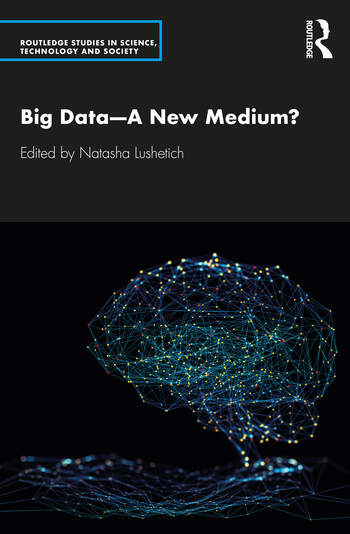



 a review of Jussi Parikka, A Geology of Media (University of Minnesota Press, 2015) and The Anthrobscene (University of Minnesota Press, 2015)
a review of Jussi Parikka, A Geology of Media (University of Minnesota Press, 2015) and The Anthrobscene (University of Minnesota Press, 2015)